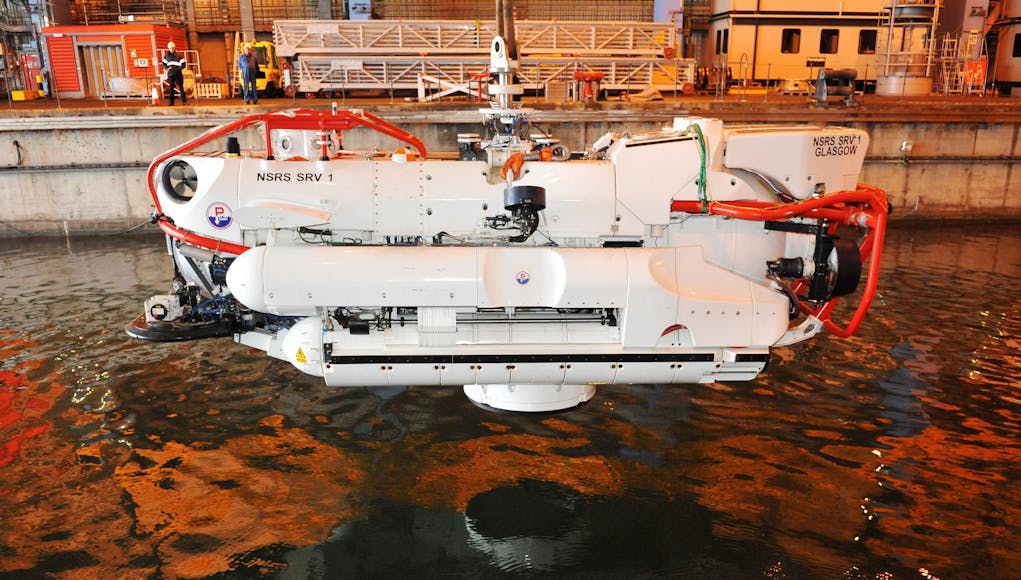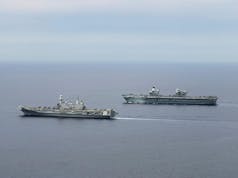The Ministry of Defence has announced the upcoming award of a contract valued at £10 million for the relocation of the NATO Submarine Rescue System (NSRS) assets.
This contract involves securing a new building for the system and ensuring it meets operational requirements.
According to the Voluntary Ex-Ante Transparency (VEAT) Notice published on 27 February 2024, “JFD Ltd acting as agent for the UK Ministry of Defence is requested to secure a lease for the relocation of the NSRS assets to a suitable commercial building.”
The contract aims to address unforeseen structural issues at the current base that have limited access and affected the contractor’s ability to maintain the NSRS’s readiness.
The scope of the contract includes “1. Securing a lease on a suitable commercial premises for housing the full Nato Submarine Rescue System (NSRS); 2. Relocating the NSRS assets to the alternative commercial building; and 3. Modifying the alternative commercial building so it is fit for purpose in accordance with the system User Requirements Document.”
The contract is set for an initial duration of four years, with options to extend for further periods.
The need for direct awarding of the contract to JFD Ltd was justified by the Ministry of Defence due to “unforeseen circumstances at the Base Location… which have resulted in limited access to personnel, affecting the Contractor’s ability to fulfil their contractual requirements to maintain Rescue System readiness.”
The Ministry of Defence further stated that “the additional services can only be supplied by JFD Ltd because they cannot be technically or economically separated from the original contract without major inconvenience to the procurer.”
Here’s the notice description in full.
What is NSRS?
The NATO Submarine Rescue System (NSRS) is a collaborative effort between France, Norway, and the United Kingdom, designed to enhance submarine rescue capabilities internationally. It serves not only the partner nations but also NATO allies and any submarine that is compatible with its docking mechanism. Launched in 2008 to replace the UK’s LR5 system, the NSRS was developed by Forum Energy Technologies’ Subsea Division. It is fully transportable by air, accommodating transport planes like the C17 or A400M, which allows for rapid deployment to any location.
Capable of operating in up to 5 meters wave height, the system aims to reach a distressed submarine within 72 to 96 hours, depending on the incident’s location, though its operations are somewhat restricted in ice-covered waters.
The process begins with a ‘SUBSUNK’ alert, indicating a submarine in distress. The initial response involves deploying a remotely operated vehicle (ROV) to the incident site to locate the submarine, establish communication, assess the situation, and prepare for the rescue mission. Following this, the Submarine Rescue Vehicle (SRV), along with portable launch and recovery equipment, support and operating gear, and a hyperbaric treatment facility for Transfer Under Pressure (TUP) procedures, are air-lifted to a mobilization port. This equipment is then loaded onto a ship, which heads to the incident site. The operation targets to commence rescue efforts within 72 hours of deployment, with the aim of bringing groups of up to 12 personnel to the surface and providing necessary medical treatment in the NSRS hyperbaric chambers if required.
It is based at HM Naval Base Clyde in the UK














“The contract aims to address unforeseen structural issues at the current base that have limited access and affected the contractor’s ability to maintain the NSRS’s readiness.”
Someone use aerated concrete by any chance..?
Hmmm… Could be.
The phrase “Voluntary Ex-Ante Transparency Notice” (or in English “Voluntary Before The Event Transparency Notice” ) maintains the great tradition of Sir Humphrey Appleby in Yes Minister!
Move it to Greenock? I think that’s where many of the SD vessels for Faslane are located. Including Northern River, the NSRS mother vessel.
or Prestwick/HMS Gannet? It gets transported by air as well.
Yeah, good point.
The contract states they need to find a commercial location, which means a decent sized secure warehouse is required.
I just don’t want people to assume it’s just a matter of sticking a DSRV in a C17 and off we go, it’s a massive logistical exercise.
And I’m going to try and explain why.
IMHO Greenock is a great location and that is due to it being on the south side of the Clyde which is way nearer to Prestwick or Glasgow Airport than Faslane. It’s also got superb access to the Deep Water required for Training and is near where all our subs are based.
Basing it at an Airport is very bad idea, although a lot of training is done using simulators these days, they do need to get wet regularly.
There are 2 processes involved one is “Intervention’ which is held at 6 hours readiness and is moved by 4 Artics to the Airport.
The aim is to get the Intervention Remote Operating Vessel (IROV),
onsite within 56 hours. Its job is to locate the Target Sub, ascertain its situation and assess if it is a Rescue or Recovery operation.
Process 2 is “Rescue” and that is where the DSRV and its entire operating, support and maintenance facility gets deployed.
That includes the TUPS which is basically a very large Decompression facility built into 6 40” containers. It can handle 72 survivors at a time.
That is the bit that takes time as it’s pretty damn big, but is absolutely vital to avoid Deco sickness (the dreaded bends). The problem is Submarines operate at a known ambient pressure, but when they flood the water increases the pressure inside. So you need to increase the pressure in the DSRV to match the Target Boat, otherwise you can’t dock (which is why so many submarine films makes me laugh).
Then they rescue the crew, get them up to dock with the TUPS and once the survivors and DSRV are all in it. Start to decompress.
But shifting everything for the rescue uses about 20 Artics to shift it to the Airport, then flown over, put on more Artics and shifted to the receiving port and assembled on a suitable Mother ship (the 3 partners have 7).
The logistics involved are expensive, complex and practiced on a regular basis, a few times per year it gets deployed locally and once a year overseas.
Target time is 72hours from notice to rescue, which sounds a lot but they essentially have to move and assemble an entire support, control and maintenance facility.
So we called it right mate. Greenock.
They’ll probably put it in Glasgow now.
Needs to be at an airbase, ready to move by C-17.